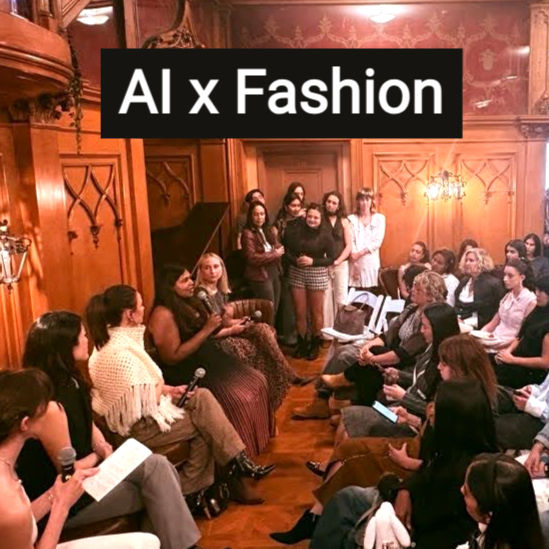Exploring Vibe Coding: AI Showdown with Lovable & Anthropic
- Jenny Kay Pollock
- Jun 14
- 5 min read

What is Vibe Coding
Vibe coding is a creative, emotionally intelligent approach to software development. It’s about more than clean code—it’s about aligning the energy, design, and feel of a project with its purpose and audience. For many women in AI, vibe coding offers a space to blend intuition with innovation, coding not just for function, but for experience and impact. The best part you don't need to know nay code you can just use plain english to ask the AI to code for you.
Fun AI Trivia Fact: Vibe coding was coined by Andrej Karpathy, OpenAI cofounder in Feb 2025.
🏎️ Rapid Growth of Lovable & Vibe Coding
Vibe coding isn’t just a buzzword—it’s fueling one of the fastest-growing AI tools in the world. From meteoric ARR gains to widespread adoption among top startups, both Lovable and the broader vibe coding movement are reshaping how software gets built and who gets to build it.
🚀 Lovable's Momentum
$50M ARR in 6 months: Lovable hit $50 million annual recurring revenue just six months after launch according to Anton Oskika Founder of Lovable. To me this impressive hockey-stick growth highlights Lovable's Vibe Coding edge.
30,000 paying customers in 3 months, $17M ARR early on—set the stage for its current success (Lovable's Company Blog & Scara).
Now raising at a $1.5B valuation, led by Accel—cementing Lovable as Europe's fastest-growing AI tool (BusinessInsider | Paywall).
⚡ Industry Momentum
Merriam–Webster officially labeled “vibe coding” as a slang & trending term in March 2025, reinforcing how widespread the term has become.

25% of YC Winter 2025 startups are using AI to generate 95% of their codebases—a compelling validation that vibe coding is not just hype (TechCrunch).
From Idea to AI Game: My First Time Vibe Coding with Lovable
I decided to take advantage of Lovable’s free weekend of vibe coding—a platform that lets you use natural language to create interactive experiences, even without traditional code. My goal? Build a game that reflects the mission of WOMEN x AI: to learn, connect, and grow together in community.
I followed the traditional vibe coding flow: prompt in plain English (no code required!) → AI-generated code → human-guided refinement.
I chose Anthropic’s Claude as my model to experiment with, curious to see how it compared to past experiences with GPT and other platforms. What emerged was an idea I’d been sitting on for a while: a retro-style game where players learn AI to break a symbolic glass ceiling.
“As a nonengineer, I’m always surprised by how far I can get with vibe-coded projects.”

The game—titled Shatter the AI Glass Ceiling—blended nostalgia with empowerment. Styled like the old Gameboy Pokémon games (but in color!), players would walk through an AI learning journey. Instead of pocket monster battles, they’d face off in AI trivia, fact challenges, and creative prompt experiments.
Here was my initial prompt to get started:
I want to make a game called Shatter the AI Glass Ceiling. Can you create a game that is a woman learning AI to break a glass ceiling?Have the woman walk like in Pokémon Red, Blue, and Yellow (but in color). As she walks, she will encounter an AI battle:
1. AI trivia (multiple choice or fill-in-the-blank) 2. AI facts (“I already knew that” or “I know that now” gameplay)
3. A modal to try prompts and create a visual badge.
The results were surprisingly playable. Using Lovable, I could refine interactions, generate quiz logic, and embed educational layers into the game. With a few tweaks it started to feel real.

Vibe Coding My Way to a Minimum Playable Product
Once my idea was in motion, I used my prompt to generate a basic version of the game. The minimum playable product gave me enough to test out core mechanics: movement, trivia battles, and some kind of AI trivia feedback loop.


While it captured the heart of the concept—learning AI through interactive battles—it wasn’t without its issues.
Some of the trivia repeated every time I played, and the AI prompt section, which was supposed to let users input something and receive a badge, didn’t show any output at all.
Still, seeing my idea come to life, even imperfectly, was exciting. It’s incredible what you can build quickly with natural language tools and a little persistence. It gave me a foundation I could improve.
Iterating for Impact: Tiny Fixes, Big Wins
I jumped into iteration. I refined the trivia logic to avoid repetition, removed the broken AI prompt feature, and focused on polish.
I added a pick your player selection for when the game starts.

One of my favorite additions was a moment of celebration for the player—a small reward for every three trivia wins.
I also added a downloadable winners badge players could share on social media, aligning with WOMEN x AI’s mission to help educate in community. We love to celebrate learning in public and this is a fun way to do that. It felt like a subtle, but meaningful way to turn gameplay into community storytelling.
I did hit a few bumps—at one point, the “A” key wouldn’t work, which turned out to be a game navigation issue.
Iteration made the difference—from playable to joyful.
I also learned that while Lovable’s editing tools are powerful, directly editing the generated code is a paid feature. Bolt, by contrast, allows more direct edits for free, which is useful to keep in mind depending on your needs.
The Final Product: A Playful Learning Tool

By the end of 75 minutes, I had a working version of Shatter the AI Glass Ceiling. It wasn’t pixel-perfect—some of the visuals and layout weren’t exactly what I envisioned—but the game worked.
Players can walk, learn, win trivia battles, and even download a badge to celebrate their AI journey.
Getting the social-sharing badge to work felt like a personal win. It transformed the experience from solitary gameplay into something communal and shareable. That, to me, is what vibe coding is all about—inviting others into the learning process and showing what’s possible, even if you’re not an engineer.

How to Get Started with Vibe Coding
The beauty of vibe coding is that it doesn’t demand a programming background—it thrives on imagination. What you need is an idea, a spark, and a platform like Lovable or Bolt that turns your prompts into code.
These tools are beginner-friendly and designed for experimentation. Start with a small goal, like a visual effect, an interactive quiz, or even a short story that evolves based on user input.
You can use models like Claude or GPT to co-create your assets, write your scripts, or debug your logic.
Let your interests lead the way. Whether you're into sound, visuals, storytelling, or data—vibe coding gives you space to explore all of it. And remember, done is better than perfect. Every weird prompt, half-working prototype, or experimental layout is a step closer to building with confidence.
Getting ready to vibe code for the first time? Check out My First Vibe Coding Project: Building the Women x AI Membership Quiz.
Build, Break, Rebuild—That’s the Point
Shattering the AI glass ceiling isn’t just about landing a role in AI—it’s about learning boldly, experimenting freely, and making space for your creativity in tech.
Vibe coding is one way to get there: playful, approachable, and deeply empowering.
So if you’ve been waiting for a sign to start building in AI, this is it.
Want support as you learn to vibe code? Join our free WOMEN x AI Membership!




Comments